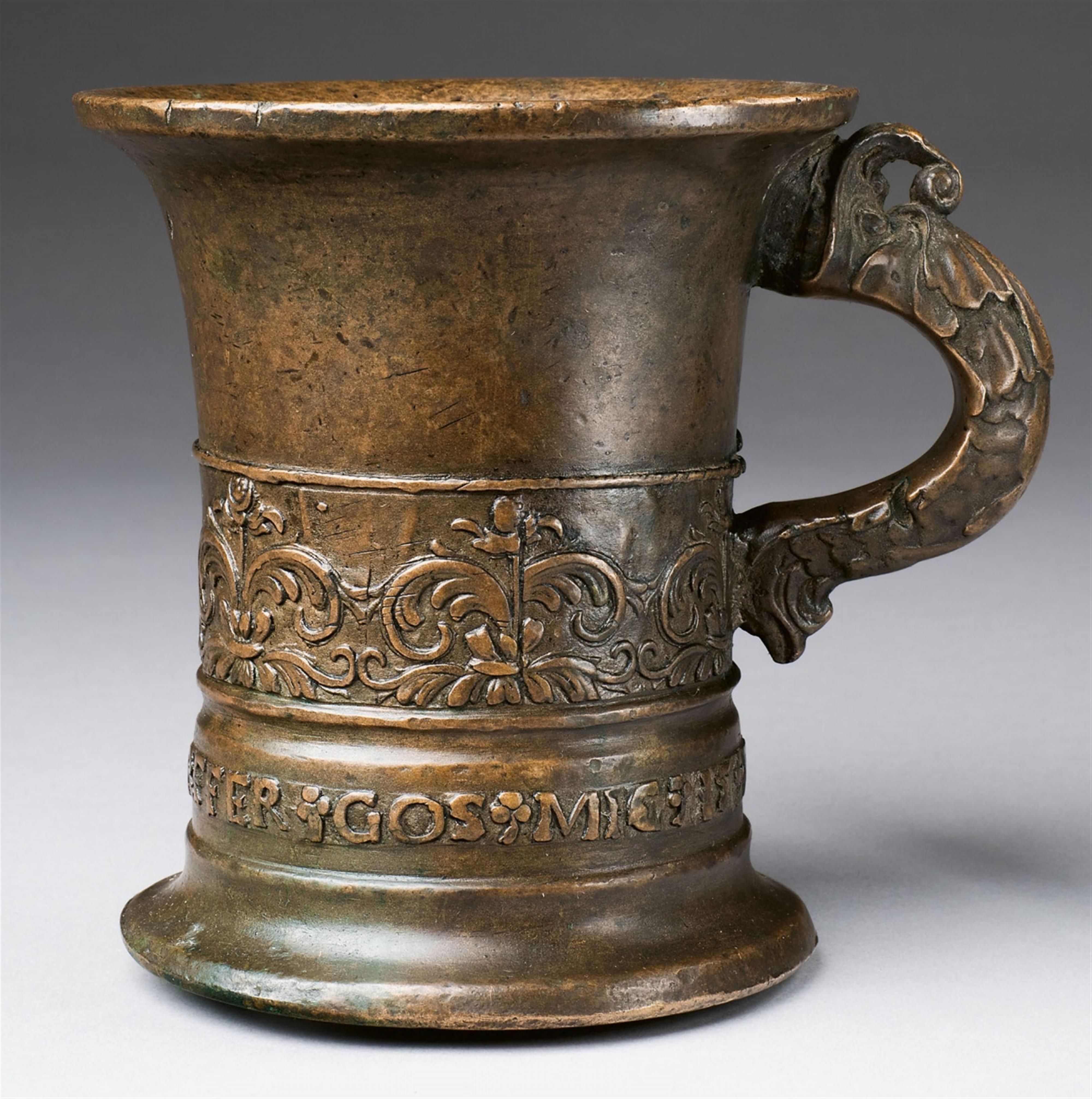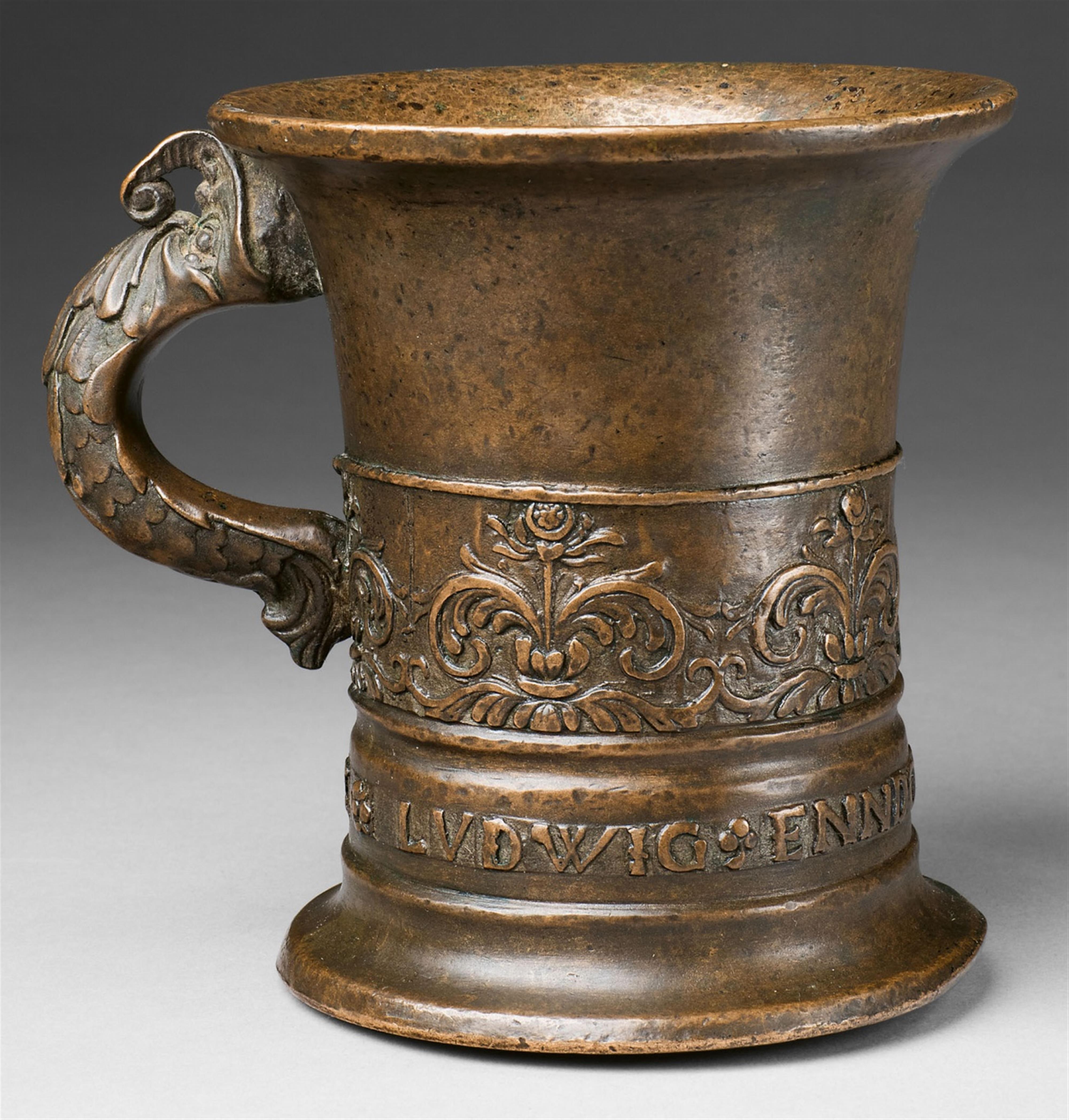An important signed Enndorfer moratar
Cast bronze with slightly mottled brown patina. Tall cylindrical form with flaring rim. Cast with a band of stylised flowerhead motifs above the signature "LVDWIG ENNDORFFER GOS MIC 15 42". One dolphin handle. H 15.3, D 13.6 cm. Weight 3.9 kg.
Innsbruck, Ludwig Enndorfer, 1542.
The Enndorfer family (also written Enndorffer) was the most important caster family in Tyrol at least after 1480. Their firm was founded by Jörg Enndorfer, who was cannon caster to Emperor Maximilian and Archduke Sigismund of Tyrol until around 1508. His successors Alexander and Ludwig (father and son) worked for the Archdukes of Tyrol, the Kings of Bohemia and Hungary, and for the Emperor. Alexander Enndorfer took over the foundry following his father's death in 1541 and occasionally cast mortars. The form used for almost all Enndorfer mortars is cylindrical with a highly-set dolphin model handle and a broad inscribed banderole containing the signature above the base. According to Johannes Jantzen, this was a distinctive identifying feature for the Enndorfer foundry.
Literature
A mortar with almost identical form and décor, also signed by Ludwig Enndorfer, is housed in the collection of the Tiroler Landesmuseum Ferdinandeum Innsbruck, inv. no. B 242 (in cat.: Ruhm und Sinnlichkeit, Innsbrucker Bronzeguss 1500 - 1650, Innbruck 1996, no. 22).
A rarer mortar by Ludwig Enndorfer can be found in the Grassi-Museum Leipzig, inv. no. 1911.192a (in: Eberle, Bestandskatalog der Sammlung unedler Metalle, Leipzig 1996, p. 51).
Cf. Jantzen, Bronzemörser, in: Anzeiger des Germanischen Nationalmuseums, Nuremberg 1968, p. 27.




